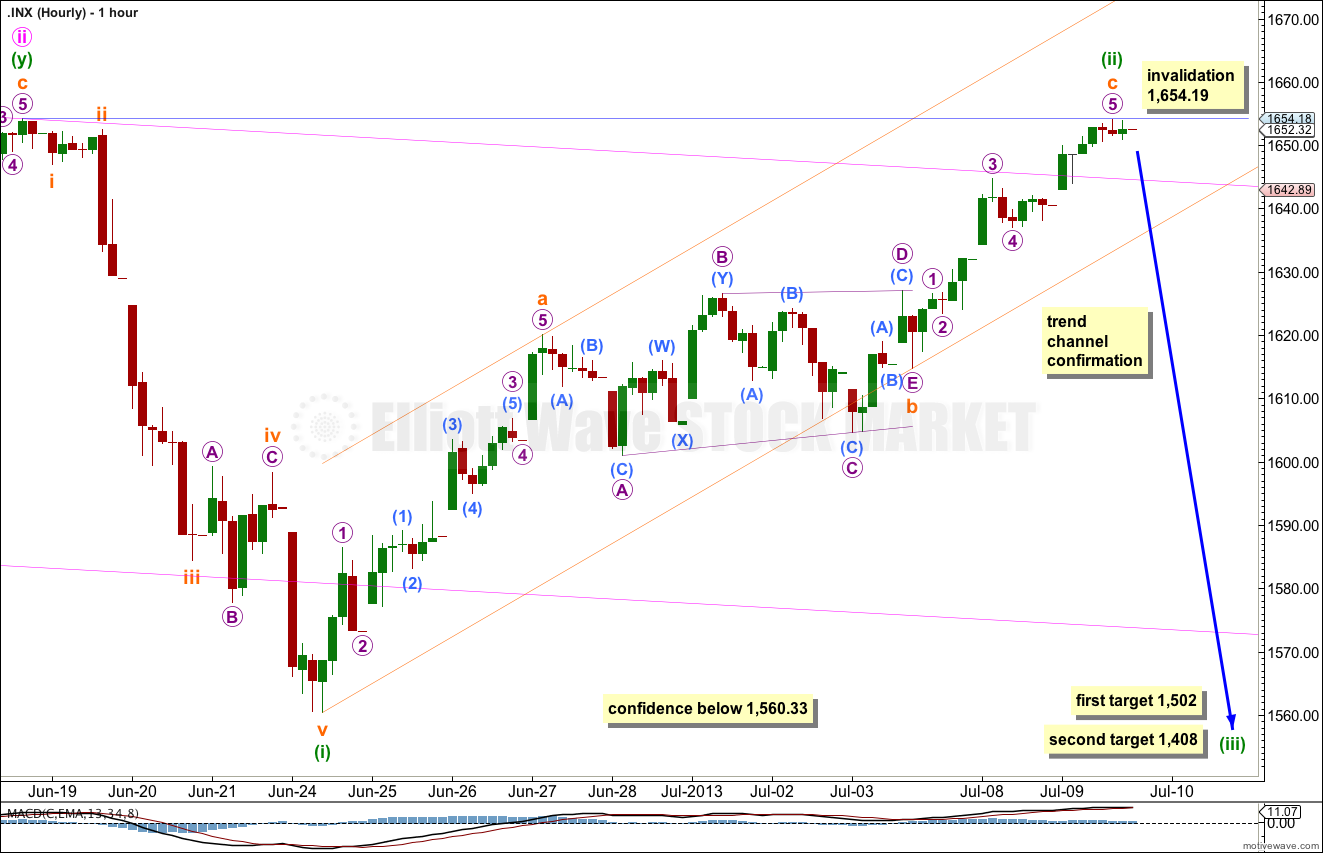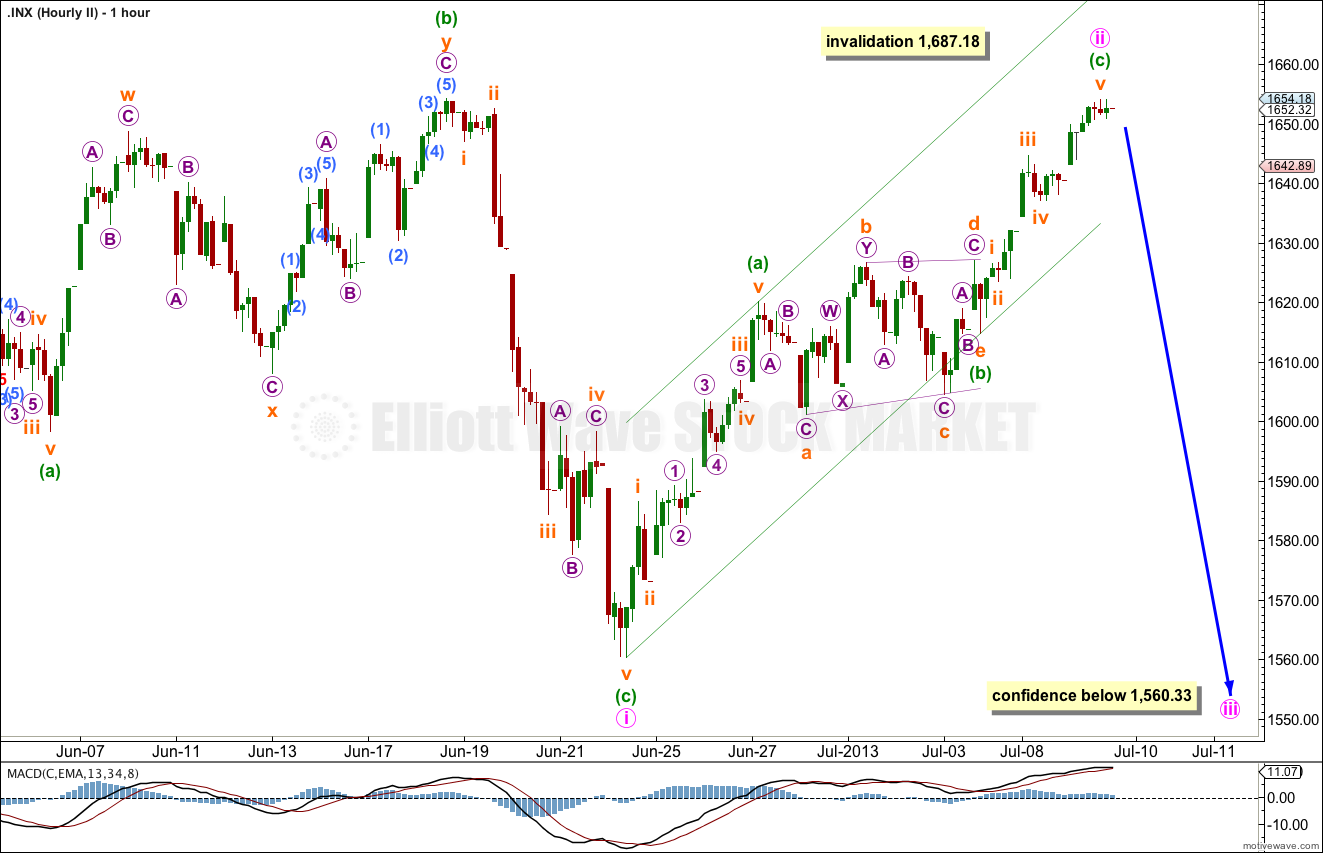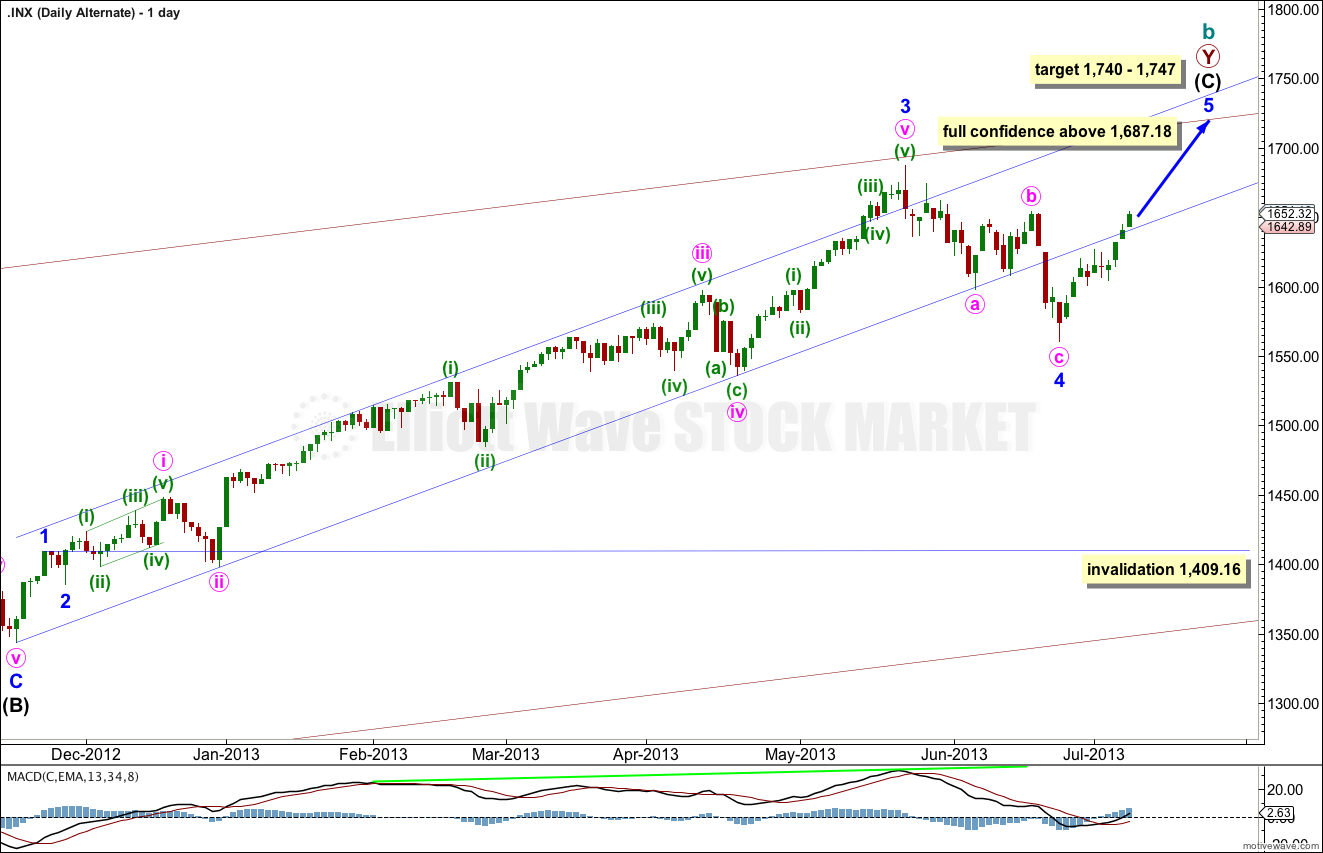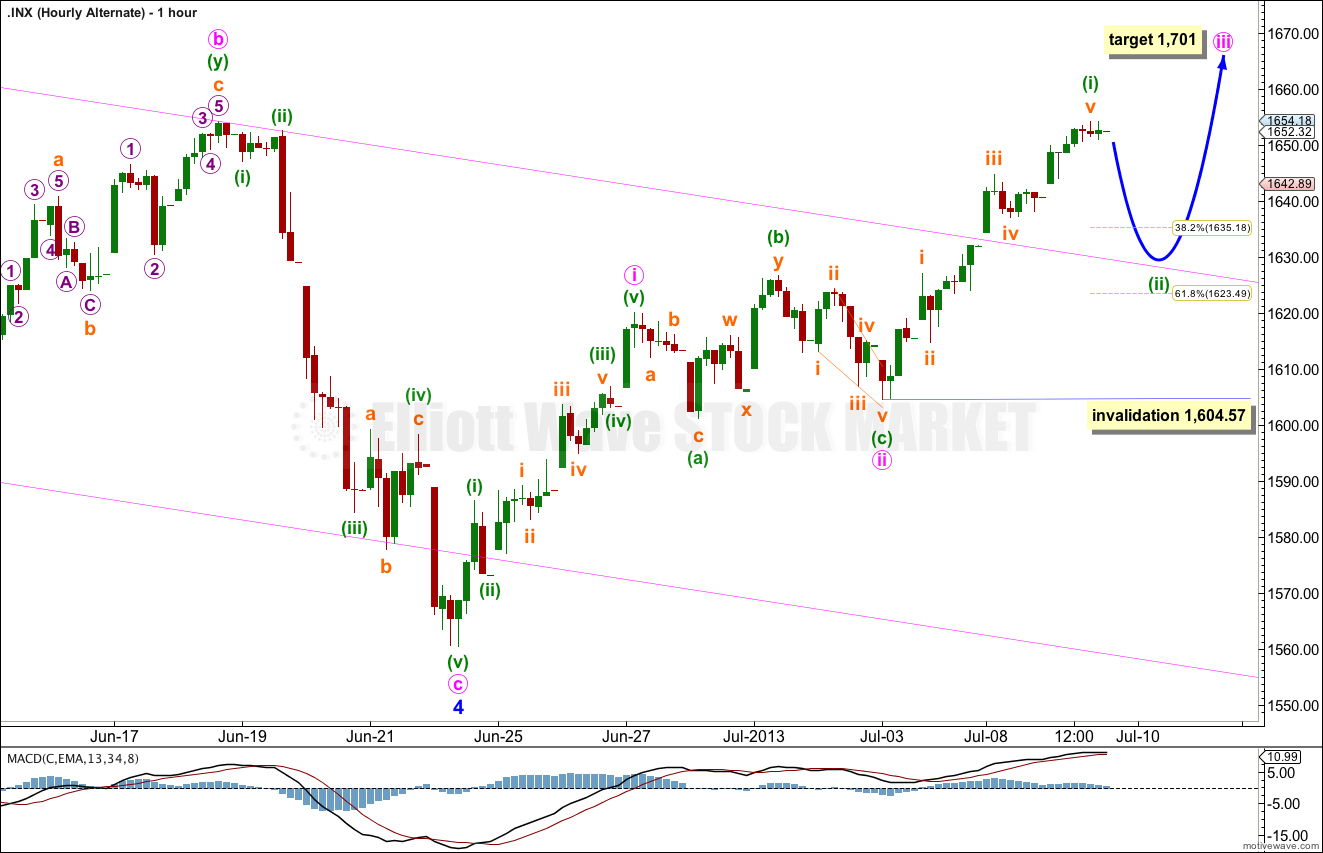Yesterday’s analysis had diverging expectations from the main and alternate hourly wave counts. Although price has moved higher fitting the alternate, it remains just below 1,654.19 and well below 1,687.18 so the main wave count still has a slightly higher probability.
We need to see price break above 1,654.19 or below 1,560.33 to have clarity this week.
Click on the charts below to enlarge.
Main Wave Count.
The widest maroon channel is copied over from the monthly chart and contains all of cycle wave b. It may be that price found final resistance at the upper edge of this channel.
The black channel in the middle is drawn about the zigzag of primary wave Y. Draw the first trend line from the start of primary wave Y to the end of intermediate wave (B). Place a parallel copy upon the extreme within intermediate wave (A). The upper edge of this channel also may be where price found resistance and where intermediate wave (C) ended.
The smallest blue channel is the most conservative best fit I can see for intermediate wave (C). It is very clearly breached by downwards movement. Today price broke through resistance at the lower edge of this channel.
What would give me confidence in this trend change is a clear breach of the black intermediate degree channel. When that is breached I will calculate long term downwards targets for you.
There is no classic technical divergence between price and MACD on the daily or weekly charts. This is possible, but unusual for the S&P 500. This must reduce the probability of this wave count. We must seriously consider the alternate.
There are no Fibonacci ratios between minor waves 1, 3 and 5 within intermediate wave (C). There is no Fibonacci ratio between intermediate waves (A) and (C). This lack of Fibonacci ratios slightly reduces the probability of this main wave count.
For minor wave 1 downwards there are two structural possibilities: a leading diagonal or an impulse. The first hourly chart below looks at the more likely impulse. The second hourly chart below looks at the less likely leading diagonal.
Minor wave 2 may not move beyond the start of minor wave 1. This wave count is invalidated with movement above 1,687.18.
Minuette wave (ii) is now an extremely deep second wave correction. Price has remained well within the small upwards sloping parallel channel; we have not yet had any confirmation that this correction is over and the next wave has begun.
Within minuette wave (ii) subminuette wave c is now just 2.47 longer than 0.618 the length of subminuette wave a.
Ratios within subminuette wave c are: micro wave 3 is 2.09 points longer than 1.618 the length of micro wave 1, and micro wave 5 has no Fibonacci ratio to either of micro waves 1 or 3.
There is no room left for upwards movement for this wave count. On the balance of probability it is likely we should see some downwards movement tomorrow. At 1,502 minuette wave (iii) would reach 1.618 the length of minuette wave (i). If price continues down through this first target and keeps going, or if when it gets there the structure is incomplete, the second target is at 1,408 where minuette wave (iii) would reach 2.618 the length of minuette wave (i).
We need to see the parallel channel about minuette wave (ii) breached before having any confidence in these targets.
Minuette wave (ii) may not move beyond the start of minuette wave (i). This wave count is invalidated with movement above 1,654.19. If that happens tomorrow then the second hourly chart below should be used.
If minor wave 1 is unfolding as a leading diagonal then this upwards movement is minute wave ii within it. Minute wave ii is now a 0.74 the length of minute wave i which is nicely within the normal range of between 0.66 to 0.81 for the second wave of a diagonal.
Both minute waves i and ii subdivide nicely as zigzags.
For a leading diagonal the third wave most commonly subdivides as a zigzag, but may also be an impulse. It must move beyond the end of the second wave. Movement below 1,560.33 would meet this core Elliott wave rule and provide confidence in the main wave count.
Within the diagonal minute wave ii may not move beyond the start of minute wave i. This wave count is invalidated with movement above 1,687.18.
Alternate Wave Count.
The biggest problem with this wave count and the reason it is an alternate is the size of minor wave 4: it is out of proportion to all the other corrections within intermediate wave (C) and clearly breaches a channel containing intermediate wave (C) no matter how that channel is drawn. Sometimes fourth waves do this and so we must consider this possibility.
Within intermediate wave (C) minor wave 3 is 23 points longer than 4.236 the length of minor wave 1.
The lack of classic technical divergence between price and MACD supports this wave count. A final fifth wave up with slowing momentum would provide divergence and give a typical look.
At 1,740 intermediate wave (C) would reach equality with intermediate wave (A). At 1,747 minor wave 5 would reach 0.618 the length of minor wave 3.
Minor wave 4 may not move into minor wave 1 price territory. This wave count is invalidated with movement below 1,409.16.
For this alternate wave count so far minute wave iii is showing an increase in upwards momentum which is what would be expected.
Within minute wave iii minuette wave (i) is now more likely to be complete. Minuette wave (ii) should unfold to the downside tomorrow. Minuette wave (ii) may find some support about the upper edge of the parallel channel containing minor wave 4 downwards drawn using Elliott’s technique for a correction.
The target for minute wave iii remains the same. At 1,701 it would reach 1.618 the length of minute wave i.
Minuette wave (ii) may not move beyond the start of minuette wave (i). This wave count is invalidated with movement below 1,604.57.
If this hourly wave count is invalidated this week with movement below 1,604.57 then we must consider the other structural possibility for minor wave 5, an ending diagonal. The invalidation point for this possibility would lie at 1,560.33.





